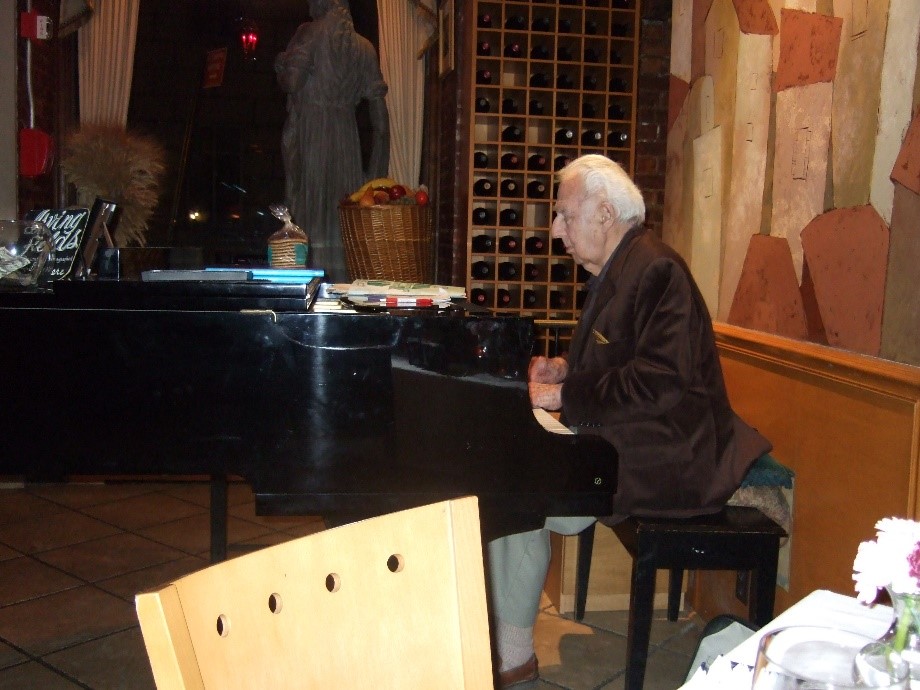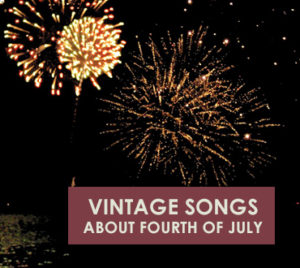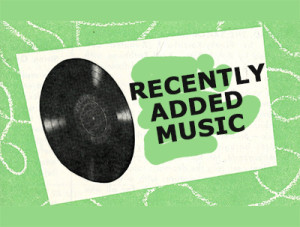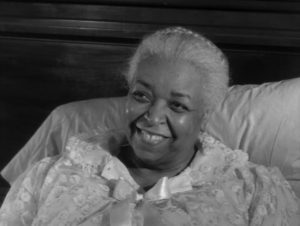Did you know that Ethel Waters was the first African American to be nominated for an Emmy Award? In 1962, the legendary jazz and blues singer received the nomination for her performance in a “Route 66” episode, “Good Night, Sweet Blues.”

Two weeks after his 101th birthday, pianist and composer Irving Fields passed away August 20, 2016 in Manhattan. He was perhaps the longest working musician in the world. At the age of hundred, he used to play the piano several nights a week at Nino’s Tuscany restaurant in Manhattan. Irving Fields became known by fusing Jewish tunes, jazz, and popular songs with Latin music. Read More About This…
 Celebrate this Fourth of July by listening and discovering some vintage songs from the early 1900s. Listen to a funny monologue and learn how the Fourth of July was celebrated at the Pun’kin Center back in 1915 or learn more about the Declaration of Independence, Thomas Jefferson and other Americana.
Celebrate this Fourth of July by listening and discovering some vintage songs from the early 1900s. Listen to a funny monologue and learn how the Fourth of July was celebrated at the Pun’kin Center back in 1915 or learn more about the Declaration of Independence, Thomas Jefferson and other Americana.
Below you will find a list of 5 songs and albums for you to share and enjoy this year with family and friends. Read More About This…
 Celebrate this Summer by listening and discovering some vintage songs from the early 1900s about summer and/or the summertime. Below you will find a list of over 20 songs for you to share and enjoy this year with family and friends.
Celebrate this Summer by listening and discovering some vintage songs from the early 1900s about summer and/or the summertime. Below you will find a list of over 20 songs for you to share and enjoy this year with family and friends.
Please note, due to copyright some of these recordings may only play for 45 second snippet to give the user a taste of what this music sounded like back in the day, if you are interested in full access considering applying for Research Station Access. Access to Research Station is limited to educators, students and serious researchers.
When Summer is Gone by Nathan Shilkret and The Troubadours Read More About This…
 Did you know the Recorded Sound Archives at FAU Libraries has over 49,000 albums along with over 150,000 songs in its databases, which is growing everyday with the help of volunteers? With so many recordings to choose from, we have given Research Station users the ability to request items be digitized.
Did you know the Recorded Sound Archives at FAU Libraries has over 49,000 albums along with over 150,000 songs in its databases, which is growing everyday with the help of volunteers? With so many recordings to choose from, we have given Research Station users the ability to request items be digitized.

 Celebrate this Fourth of July by listening and discovering some vintage songs from the early 1900s. Listen to a funny monologue and learn how the Fourth of July was celebrated at the Pun’kin Center back in 1915 or learn more about the Declaration of Independence, Thomas Jefferson and other Americana.
Celebrate this Fourth of July by listening and discovering some vintage songs from the early 1900s. Listen to a funny monologue and learn how the Fourth of July was celebrated at the Pun’kin Center back in 1915 or learn more about the Declaration of Independence, Thomas Jefferson and other Americana. Celebrate this Summer by listening and discovering some vintage songs from the early 1900s about summer and/or the summertime. Below you will find a list of over 20 songs for you to share and enjoy this year with family and friends.
Celebrate this Summer by listening and discovering some vintage songs from the early 1900s about summer and/or the summertime. Below you will find a list of over 20 songs for you to share and enjoy this year with family and friends.